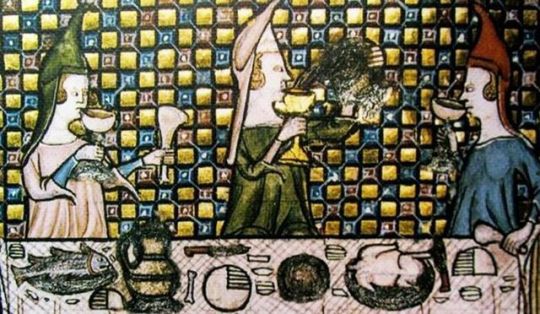#beguinecovent
Explore tagged Tumblr posts
Photo



WITCHTOBER
DAY 15 « BEGUINE COVENT»
Appeared at the end of the 12th century, the Beguines were women, often single or widowed, who gathered to live in perfect autonomy. They belonged to a secular religious community under a monastic rule, but without forming perpetual vows. In this way, these women called themselves "Sisters of the Sect of Free Spirit and Voluntary Poverty" and obeyed only the Great Demoiselle (the leader of the community). They did not marry, but did not take chastity vows.
They were present in several sectors of the economy: health (hospitals, midwives), education, crafts (cloth, embroidery art, tapestry), care for the dying, burials.
The beguines lived in community, in small individual houses adjoining with vegetable gardens and medicinal, coming and going freely. These women enjoyed physical, intellectual and spiritual prosperity unlike the thousands of women confined and condemned in convents.
Soon (in 1300) the movement grown and spread to Alsace, Belgium, Germany, the Netherlands and France. Then in the 15th century the special status of the Beguines was dismantled ... heresy was not far. Those free-thinking women who gathered to escape the control of a convent or a husband could only trigger the reluctance of the state and the Church.
JOUR 15 : "Les Béguines"
Apparues à la fin du XII ème sicèle, les Béguines étaient des femmes, souvent célibataires ou veuves, qui se rassemblaient pour vivre dans une parfaite autonomie. Elles appartenaient à une communauté religieuse laïque sous une règle monastique, mais sans former de vœux perpétuels. De cette manière, ces femmes se faisaient appeler «Sœurs de la secte du Libre Esprit et de la Pauvreté Volontaire» et n’obéissaient qu’à la Grande Demoiselle (la dirigeante de la communauté). Elles ne se mariaient pas, mais ne faisaient pas de vœux de chasteté.
Elles étaient présentes dans plusieurs secteurs de l’économie : santé (hôpitaux, sages-femmes), l’éducation, l’artisanat (tissu, broderie d’art, tapisserie), le soin aux mourants, les enterrements.
Les béguines vivaient en communauté, dans de petites maisons individuelles voisinant avec des jardins potagers et médicinaux, allant et venant en toute liberté. Ces femmes connaissaient une prospérité physique, intellectuelle et spirituelle au antipode du flétrissement auquel furent condamnées les milliers de femmes enfermées dans des couvents.
Rapidement (en 1300) le mouvement s’étendit et se répandit en Alsace, en Belgique, en Allemagne, aux Pays-Bas et en France. Puis au XVème siècle le statut particulier des béguines fut démantelé…l’hérésie n’était pas loin. Ces femmes libres de penser qui se rassemblaient pour échapper au contrôle d’un couvent ou d’un mari ne pouvaient que déclencher les réticences de l’Etat et de l’Église.
7 notes
·
View notes